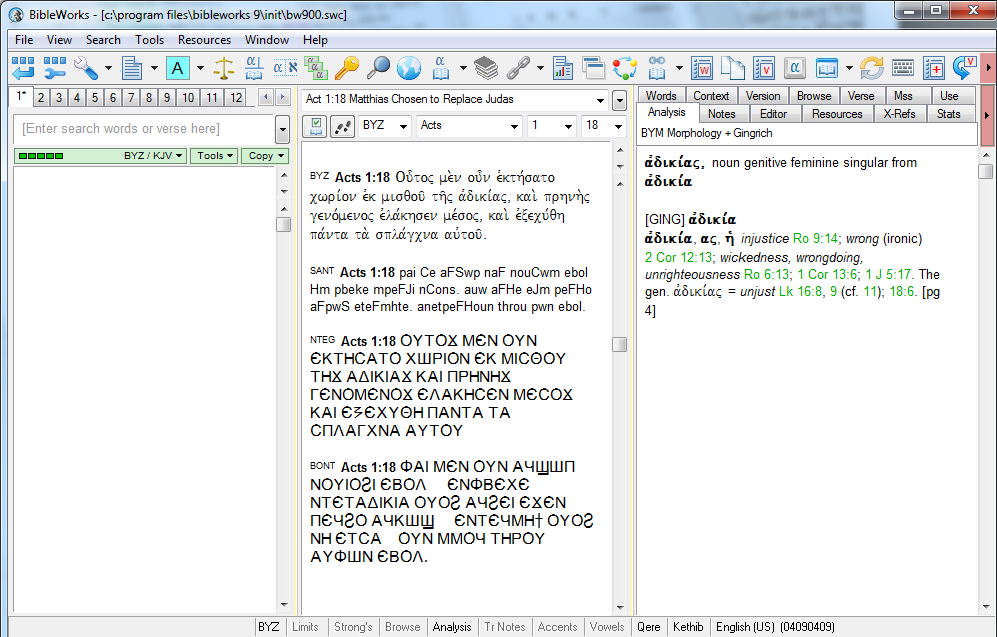Today a wonderful opportunity to continue illustrating more features of BibleWorks 9 has presented itself. With the issuing of Francis Watson’s pdf arguing that the “Gospel of Jesus’ Wife” is a fake, the seemingly unparalleled line 6 stands out amid other lines for which Watson claims to have found possible sources of derivation, even if some of those are themselves rather loose.
Watson suggested “The passage might conceivably echo Papias’s unpleasant description of Judas Iscariot’s grossly swollen body.” In response, Richard Bauckham (in a comment on Mark Goodacre’s blog) recommended taking a look at how Acts 1:18 is rendered in Coptic translations.
There are Coptic editions of the New Testament in various places online, including the Internet Archive. But I seemed to recall that there were free Coptic texts that could be added in to BibleWorks – and I was right. It only took a matter of minutes to download and install them.
It was then only a matter of looking up the verse and seeing that none of the Coptic versions provides a close parallel to the wording in the “Gospel of Jesus’ Wife.” (I will be the first to admit that my knowledge of Coptic, while not non-existent, is extremely limited, and so I encourage those with greater proficiency in the language to offer their perspectives on this topic).
Nevertheless, taking a look at that verse in BibleWorks reinforced to me the possibility of the connection Watson and Bauckham suggest. The reference to Judas’ “unrighteousness” in the Greek text, as well as the tradition of his “swelling up,” do indeed seem like they intersect with the snippet in line 6 of the “Gospel of Jesus’ Wife.” But the Coptic versions of the NT that I was able to access do not render the wording in a manner that is likely to have been utilized directly by the person who created the “Gospel of Jesus’ Wife” – whether that took place in antiquity or more recently.














